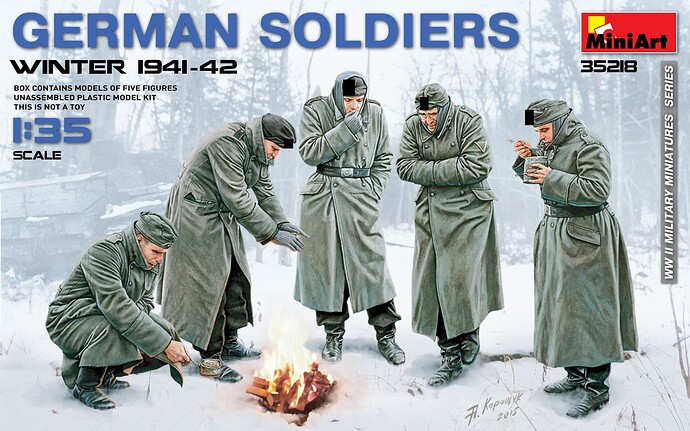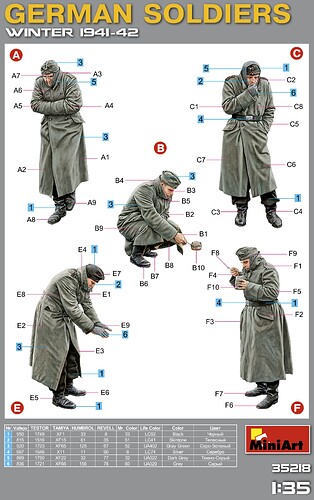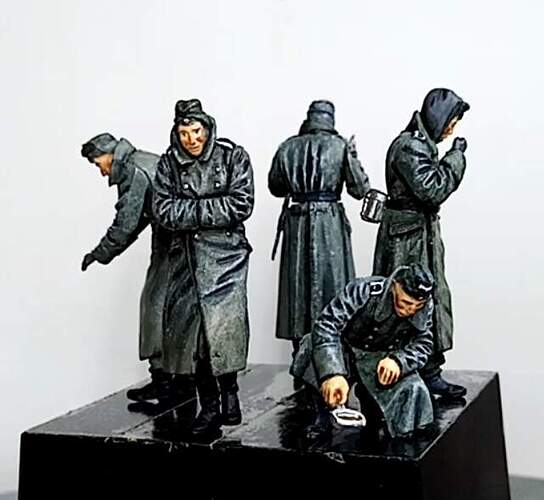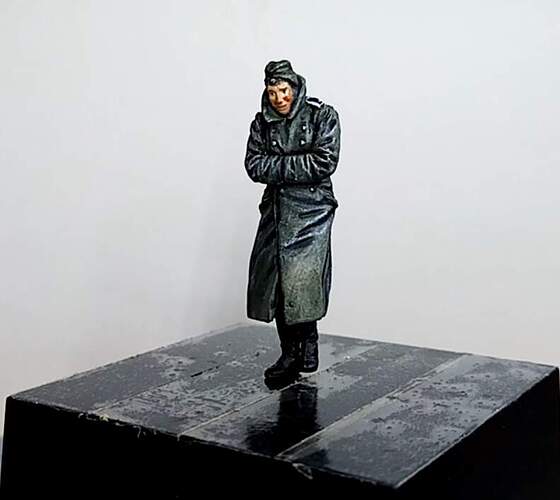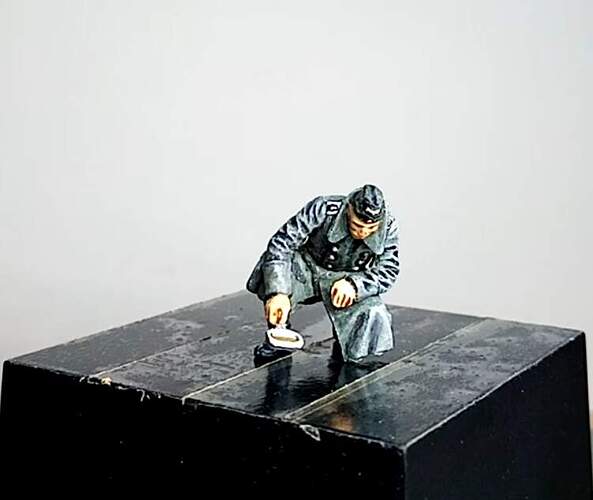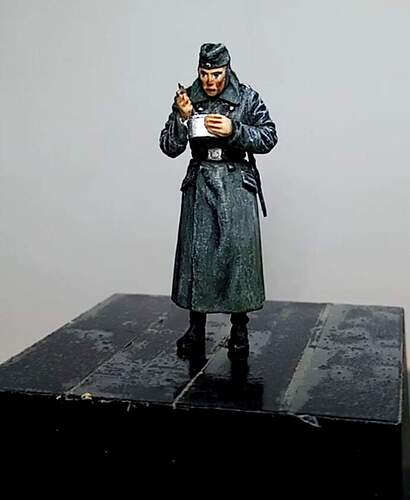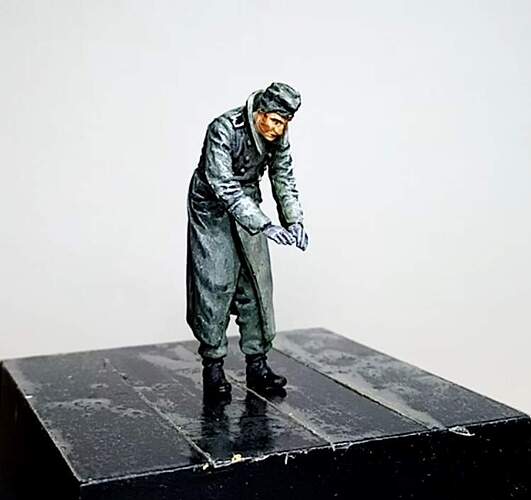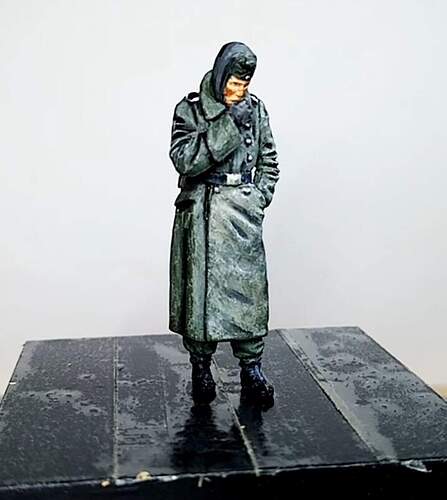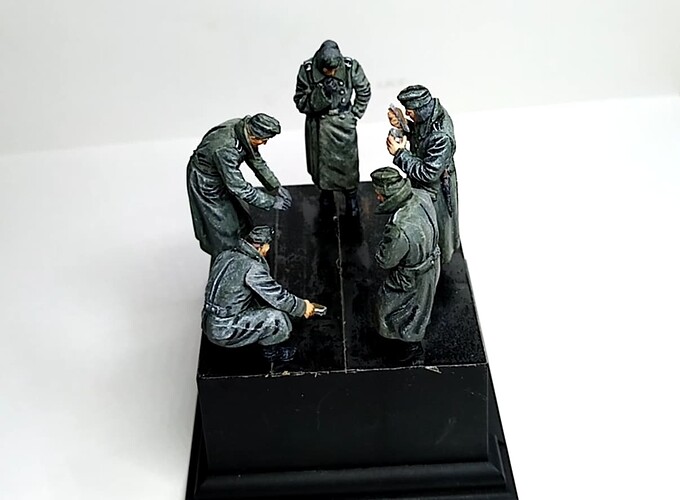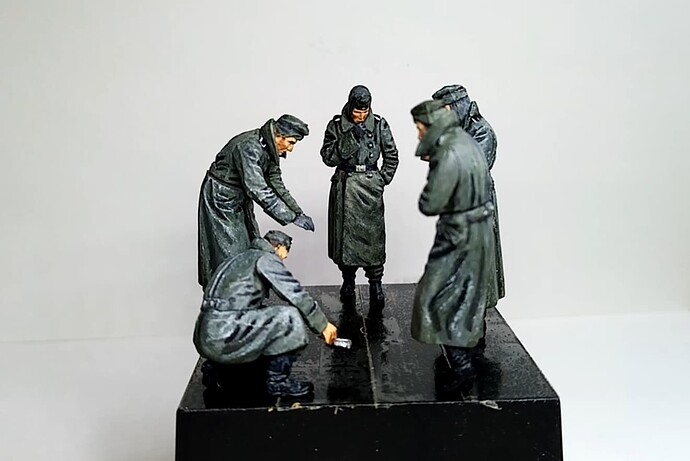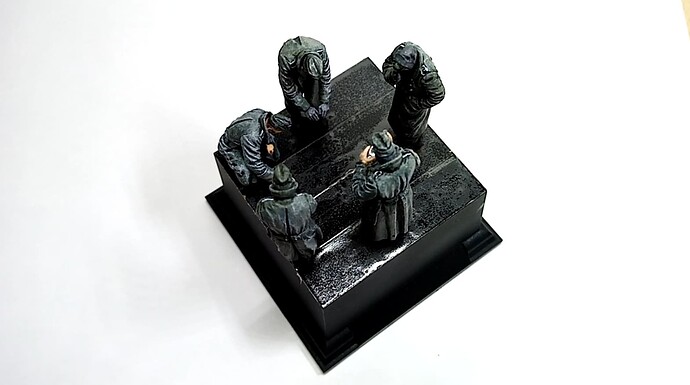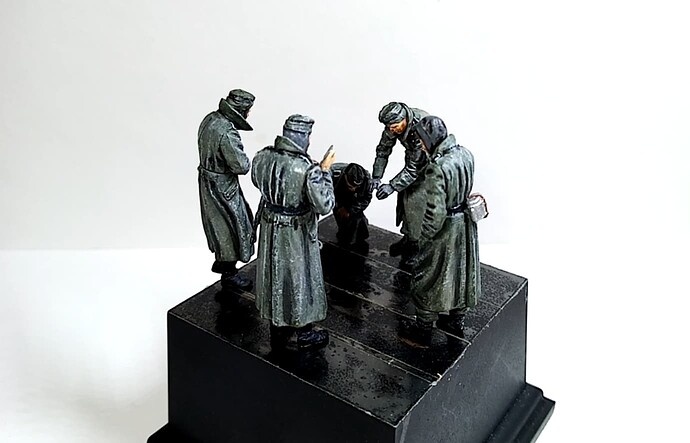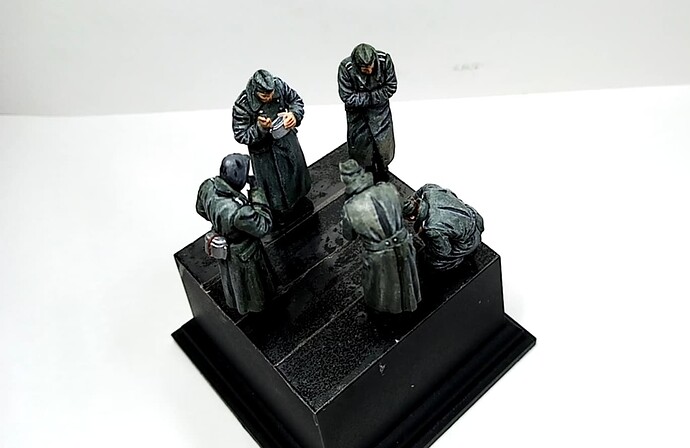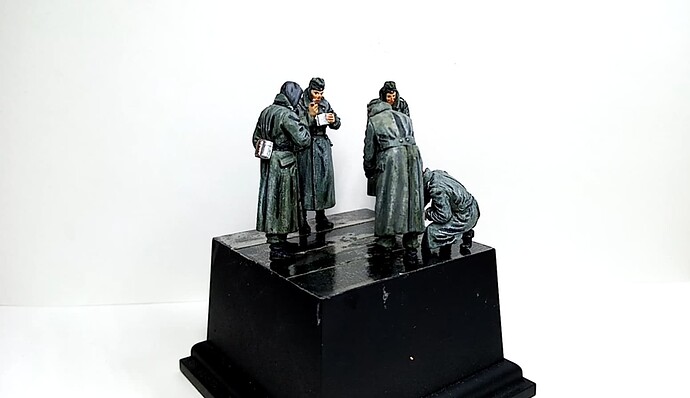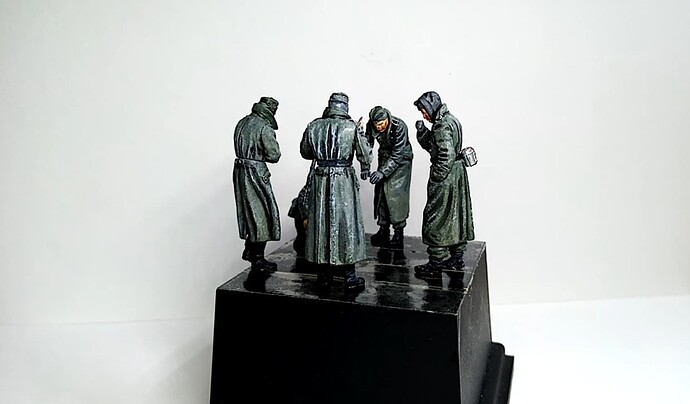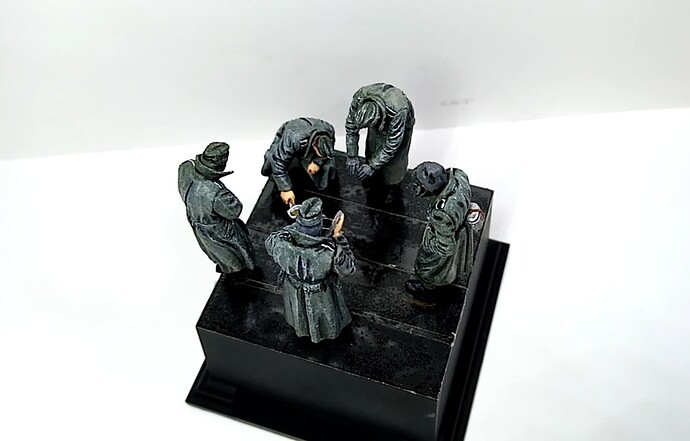Today I show you the miniatures of this set of MiniArt German soldiers winter 1941 1942 MiniArt 1/35 35218.
I bought and painted the miniatures of this set more than a year ago.
Recently I decided to take them back and improve the painting.
As I have already done with other MiniArt sets, I took this MiniArt set, German soldiers winter 1941 1942 MiniArt 35218, of which I had already painted the miniatures contained more than a year ago and I decided to improve the result so that they become excellent miniatures.
These miniatures have marked the first good results of my personal painting technique, although it is not the painting technique of Sheperd Paine I really like the final result, and I decided to add the Paine technique recently only in some details (some folds and the faces with noses and cheeks redder due to the sun and the freezing cold).
Here you can find the link to the video I dedicated to them on youtube: https://www.youtube.com/watch?v=r5qMXcOTjd8&t=13s
Here you can find the first attempt at painting: https://www.youtube.com/watch?v=Fd-TM4SPBHQ&t=7s
I hope you like this result.
7 Likes
Mate those uniforms look nice and icy. How did you get that effect? The figures just need a nice little stove to huddle around ! Good job!
2 Likes
I’m glad you like them.
So I painted these miniatures following this technique:
-
first I painted the whole uniform with the color of the coat, in these miniatures I used the Tamiya acrylic XF-65, but the Vallejo acrylic 70.830 is also fine. (I recommend spraying the Tamiya mattifying spray TS-80). to stiffen the color and obtain a first opaque effect.
-
the second step consists in passing the Effects Dust AK (AK015) over the whole uniform, it is important not to pass too much color so as not to erase the main color, that is, the green.
-
the third phase consists in passing only the Tamiya XF-57 acrylic color thinner over the whole uniform, (not the color, just the transparent thinner that is on the surface of the color).
(phase 2 and 3 are used to make the fabric a little more worn and less plastic, like the fabrics of the past that did not have an intense color like modern clothes).
the last phases consist of shadows and lights.
For the shadow I used the effect Nuln Oil Shade (citadel color) and Panel line accent color (black by Tamiya), I strongly advise against using the latter because it only gives a good effect on objects with a metallic effect (pipes, engine body, etc.).
Citadel Nuln Oil is a good color and should be applied to small folds, to obtain a result similar to mine, you can also use a little Panel line, but use it sparingly and only on small folds, such as those of the sleeves.
For the large folds (the larger coat folds) it is better to mix the black color with the uniform color, so as to obtain a darker uniform color and to be able to paint it more precisely, once dried you can also pass a little Nuln oil on them to emphasize the shadow. (this is if all the shadows are very dark on the rest of the uniform).
The last step is to apply a drybrushing effect with the white color (I recommend Vallejo white 70.919).
it is better to pass the drybrushing effect ONLY on the folds and not on non-relief parts, because the final effect is that they seem “dusty” or “covered in flour”, but if you want to obtain an effect like small piles of snow on the dress (for example on the shoulders) you can pass the drybrushing on the shoulders, although in this case I recommend you to also put a little snow effect on the shoulders especially for dioramas in a winter environment.
4 Likes
Thank you for that comprehensive ‘step by step’ painting guide. Most useful!
2 Likes
Nice! I’ve always been tickled when I saw that set but have never pulled the trigger on it. Nice to seem them built and painted. Thanks for sharing
2 Likes
Thank you so much, I’m glad you liked them, thanks also for commenting
1 Like
I’m glad you liked them, I also published a step by step tutorial on the site and on my youtube channel, I recommend you watch them to pay attention to how I use the Tamiya acrylic XF-57 color thinner.
The only thing I have to recommend is to create the shadows as I wrote here before, (for single-color uniforms, mix the uniform color with the black color and create shadows on large folds, because using only nuln oil on large folds can create “pools” of dark color that are not nice) and to use a very diluted black color to make large folds on miniatures that have a camouflage uniform, for small folds you can use nuln oil, and pass the nul oil on the entire uniform to make it look a little dirty from time and constant use.
2 Likes
